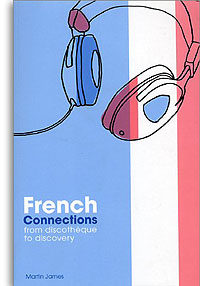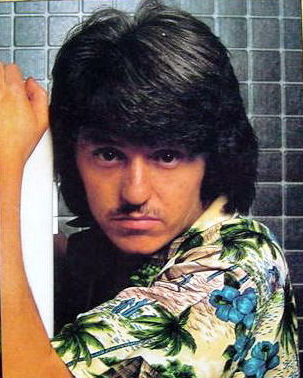Aidan Curran posted on December 26, 2008 18:00
So did you get over the Christmas okay? And did Mr Making-A-List-Checking-It-Twice bring you what you wanted?
 This Christmas time, someone correctly figured out that the CLUAS Paris correspondent is quite ignorant about much of the music going on in his beat. Yes, we received a book about French electronica.
This Christmas time, someone correctly figured out that the CLUAS Paris correspondent is quite ignorant about much of the music going on in his beat. Yes, we received a book about French electronica.
‘French Connections: From Discothèque To Discovery’ is the uninspired title of the work in question (right), written by Martin James. Published in 2003, it’s a history of French electronic music. We’ve just started reading it and no doubt we’ll be dipping into it on these pages during the coming months, if not years.
Two wonderful facts from James’ book: (1) The Village People were assembled by two Frenchmen, Henri Belolo and Jacques Morali, and the group’s original Indian chief was another Frenchie, Felipe Rose. (2) ‘D.I.S.C.O.’ by Ottowan (you know the song) was written by the father of Thomas Bangalter from Daft Punk. No wonder he never shows his face in public.
However, we have a major gripe: after just one chapter we lost count of the factual inaccuracies, bad style and spelling mistakes that shake the book’s credibility. From the very first paragraph: “Even enfant terrible of the film world Quentin Tarantino grabbed his 15 seconds of disco delight with the 1998 movie Boogie Nights.” Lazy, bloated writing; no internal punctuation; misused metaphors – and Boogie Nights was made by Paul Thomas Anderson, not Tarantino.
Furthermore, we learn that Britain’s first disco opened “in 1862” – truly ahead of its time, as Thomas Edison only invented the phonograph 15 years later. And a few pages later, in a book purporting to be a history of modern French music, the name of France’s biggest rock star is misspelled as ‘Jonny Halliday’. It’d be a brave writer who’d submit shoddy copy like that to the CLUAS gaffer.
Still, we’re sufficiently intrigued by James’ opening pitch; France invented disco. The word ‘discothèque’ is French, and the first discos – the first nightspots for dancing to recorded music and not a live act – opened in Paris as underground music clubs during the Nazi occupation. The modern disco, with its garish décor, restricted access and air of exotica, also originated in Paris with clubs like Whiskey-A-Go-Go and Chez Regine. (The latter, near the Champs-Elysées, is still open.)
As for claiming the disco sound for France, this book is not so convincing. It’s hard to pinpoint one record where Motown pop, funk basslines and Philly soul strings came together for the first time, although Van McCoy’s ‘Do The Hustle’ is generally credited with popularising what we now know as disco.
 But a Frenchman can claim to have invented disco’s distinctive four-on-the-floor beat. His name is Jean-Marc Cerrone, a Parisian drummer known just by his surname. On his 1976 album ‘Love In C Minor’, Cerrone (left) put his bass drum right to the front of the mix, kicking out a simple four/four beat. Et voilà: the classic disco rhythm track that anyone can dance to.
But a Frenchman can claim to have invented disco’s distinctive four-on-the-floor beat. His name is Jean-Marc Cerrone, a Parisian drummer known just by his surname. On his 1976 album ‘Love In C Minor’, Cerrone (left) put his bass drum right to the front of the mix, kicking out a simple four/four beat. Et voilà: the classic disco rhythm track that anyone can dance to.
Apart from percussion, the rest of ‘Love In C Minor’ is what we would today consider cheesy disco: string swoops, synth riffs – and plenty of orgasmic female groaning. Cerrone was notorious for the machismo of his music and album art, with sleeves that feature him as a Casanova-type figure attended to by naked ladies who also appear in his videos. (This is the classic French sexism that persists in the Parisian visual media even today: naked women in ads and magazines are not there for softcore exploitation. Oh no – they’re au naturel.)
So, despite selling millions of records Cerrone has dated badly, both sonically and visually. His work sounds kitsch beside that of Giorgio Moroder or Nile Rodgers and Bernard Edwards. But he still has his fans: Goldfrapp named a song for him on her 2008 album ‘Seventh Tree’ and called her 2005 album 'Supernature' after Cerrone's 1978 million-selling album of the same name. And Bob Sinclar is the self-appointed heir of Cerrone, remixing the older man’s work and keeping it on the chic dancefloors of Paris and the Riviera.
Here’s Cerrone’s biggest hit – the title track from ‘Supernature’. You’ll see what we mean about the cheesy ‘70s sexism:
More ...
[Read More...]